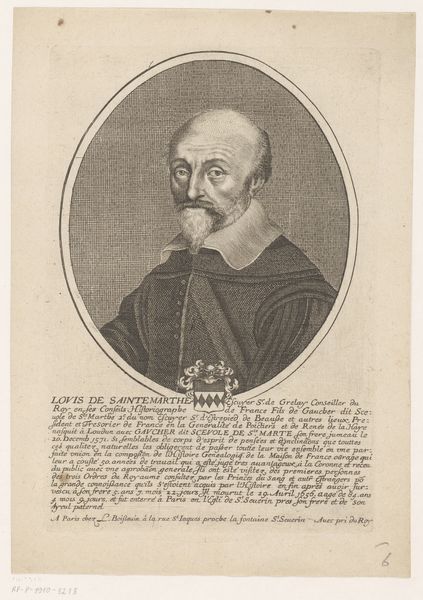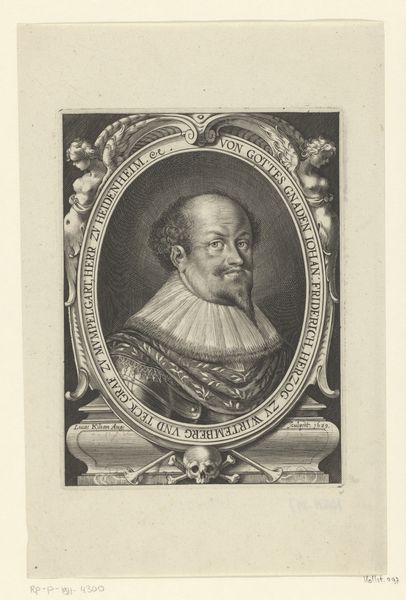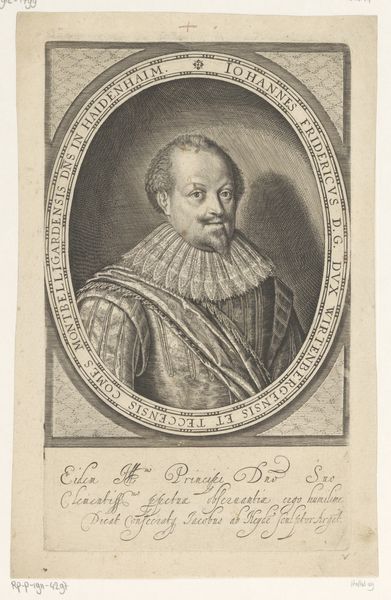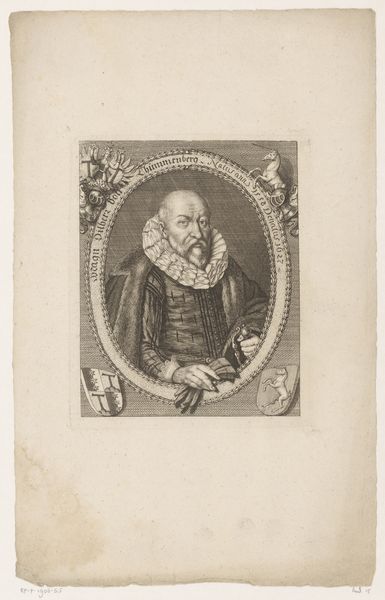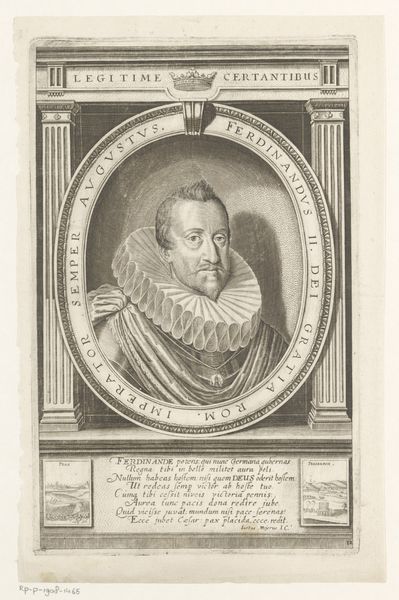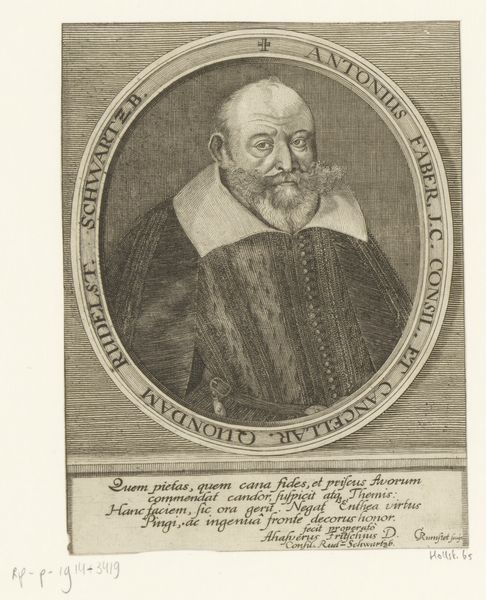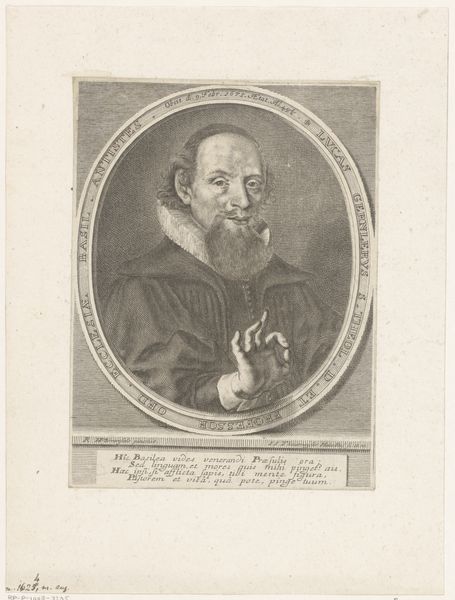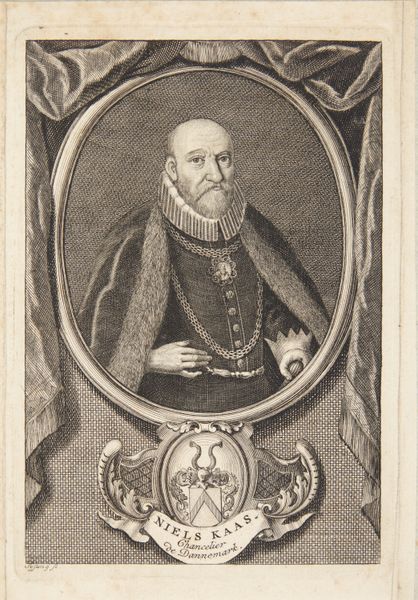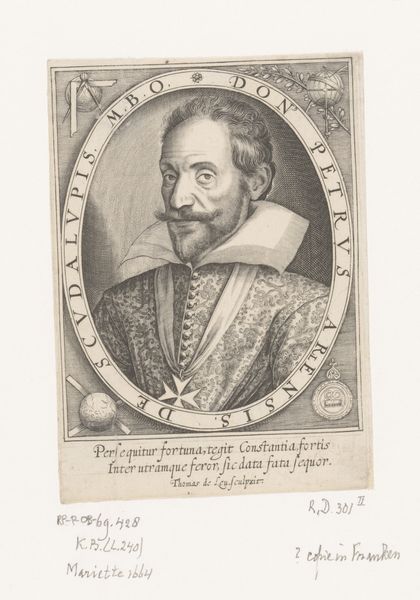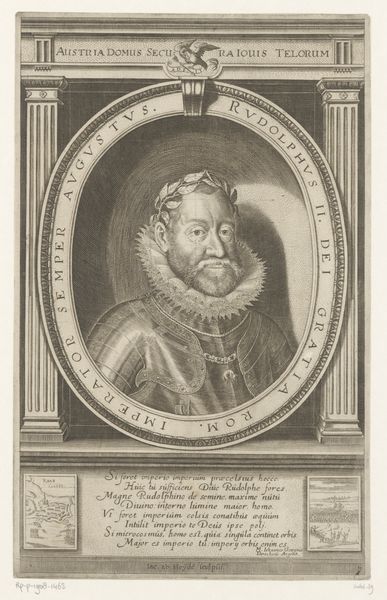
print, engraving
#
portrait
#
baroque
# print
#
old engraving style
#
engraving
Dimensions: height 194 mm, width 130 mm
Copyright: Rijks Museum: Open Domain
Editor: So, this is "Portret van Ludwig Friedrich von Württemberg-Mömpelgard," an engraving by Jacob van der Heyden. It was created sometime between 1596 and 1645. There's something rather formal about it, but those intricate details in the oval frame…almost soften it somehow? What do you see when you look at it? Curator: It whispers tales, doesn’t it? Baroque flourished in the 17th Century in reaction to the sobriety of mannerism. This engraving reflects an almost restless era: a society of elaborate court dress, royal authority and colonial expansion. It feels almost contradictory; like he's looking to the future while rooted firmly in tradition. Do you feel the weight of those words surrounding the portrait? Editor: Absolutely, they are all quite grand and serious. What was the role of printmaking at this time? Curator: Printing, particularly engraving, was like the social media of the time. It was used to disseminate imagery. In the Baroque era the printing techniques mirrored the drama of painting through striking and visually exciting imagery. This artwork exemplifies how engravers use dramatic ornamentation to convey powerful meaning to their audiences. And this, as an aside, is why historical analysis is a constant exploration - how do we ‘read’ that historical social media now? Editor: That's a fantastic way to look at it. It’s like each tiny line has a purpose in spreading that message! I definitely see it differently now. Curator: Exactly. It encourages us to imagine what Ludwig Friedrich would be hoping to tell us! What story does the image try to make?
Comments
No comments
Be the first to comment and join the conversation on the ultimate creative platform.
